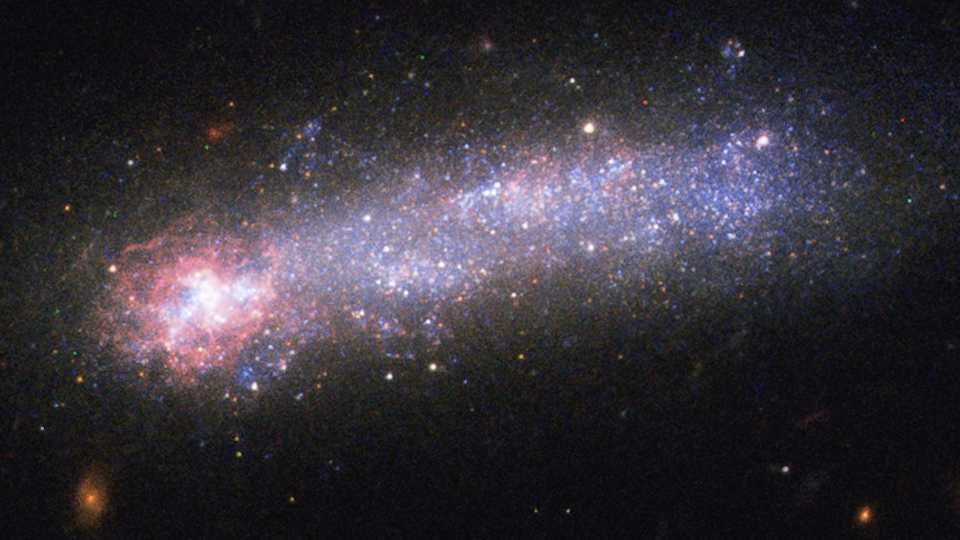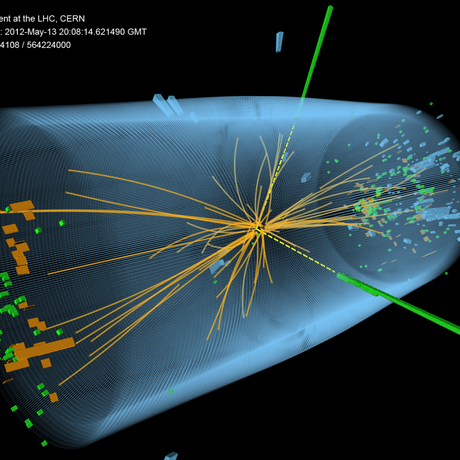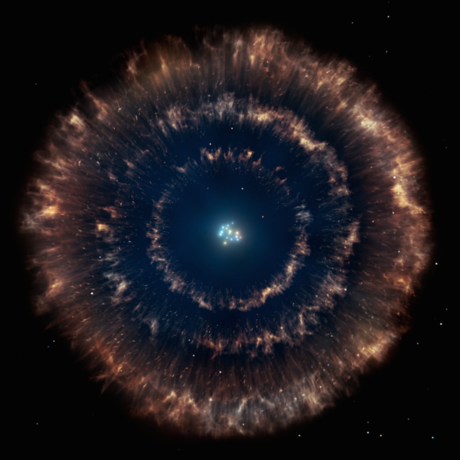Science News
Space Friday: Juno at Jupiter, New Horizons Extension, and a Firework Galaxy

By Jove, There Are LEGOs Flying Around Jupiter!
On July 4, NASA’s Juno (JUpiter Near-polar Orbiter) spacecraft will arrive at the largest planet in our solar system. It will become the ninth vehicle to encounter Jupiter, but only the second to go into orbit around it.
Juno will orbit Jupiter 37 times over the next 19 months, studying the giant planet’s atmospheric composition and analyzing the ratio of hydrogen to oxygen to determine the water content of Jupiter’s clouds. It will also map the planet’s gravitational and magnetic fields, which researchers expect to reveal more about its internal structure, including the properties of the core and its role in generating the planet’s immense magnetic field. Juno does have an optical camera (Junocam), which snapped images of Earth, but it’s not expected to survive more than seven orbits due to the radiation trapped in the magnetic field.
Following a highly elliptical orbit designed to minimize exposure to the radiation field, Juno will nevertheless absorb a dose equivalent to about 100 million dental x-rays. This would toast its delicate electronics in the first orbit were they not encased in 400-pounds of centimeter-thick (half-inch thick) titanium shielding, but even that may not be enough to protect some components (such as the Junocam) for the entire mission. Nonetheless, the spacecraft will receive less radiation than did its predecessor, Galileo, which orbited for eight years.
An unusual aspect of this mission is the fact that unlike otherspacecraftbound for the outer Solar System or those with long-term power needs, Juno is powered not by radioisotope thermoelectric generators (RTGs) but rather by 8.9-meter (29-foot) long solar arrays—the largest ever installed on an interplanetary spacecraft. This was necessitated by a global shortage of plutonium-238, the usual RTG fuel. With only enough left to power two or three deep space missions, NASA faced a serious threat to future exploration of the outer Solar System. However, improvements in solar cell efficiency came to the rescue. At the distance of Jupiter, which is five times farther than Earth, the spacecraft receives only a twenty-fifth—or four percent—of the amount of sunlight it would receive on Earth (thank you, inverse-square law). So to collect enough sunlight to generate power for the spacecraft, the solar panels are as big as they are, cranking out 450 watts of electricity, which is just enough to power five standard incandescent light bulbs and only slightly less than Galileo’s RTGs were able to produce.
With Jupiter Orbit Insertion, NASA returns for a long-term study of the stormy giant that scientists hope will ultimately yield a better understanding of planetary atmospheres and magnetic fields and how they came to be.
And the LEGOs? The spacecraft carries three specially-made, aluminum LEGO figurines that are boldly going where no LEGO has gone before. LEGO blocks have previously travelled to the International Space Station and to Mars, but this trio of characters represent the mythical deities Jupiter and Juno as well as the Italian astronomer Galileo, who was the first to turn a telescope toward Jupiter in 1610. –Bing Quock
New Horizons’ Extended Mission Is Go!
A year ago, NASA’s New Horizons spacecraft flew past the distant dwarf planet Pluto, taking high-resolution images that are still being received due to the very slow rate of data transmission from the vehicle. In the months following the encounter, ground controllers executed a series of course corrections that put the spacecraft on a trajectory toward a Kuiper Belt object a billion miles farther out, called 2014 MU69, anticipating a mission extension (which, in these cost-cutting times, is never a sure thing). Now, however, the mission team can rest assured that when New Horizons arrives on January 1, 2019, someone will be around to pick up the phone—NASA has just officially approved funding to continue operations for the MU69 encounter.
About 45 kilometers (30 miles) in diameter, MU69 currently lies 43.4 times farther away from the Sun than Earth. From our vantage point, we observe it against the stars of Sagittarius the Archer, although it moves slowly in an orbit thought to take about 300 years to circle the Sun. MU69 was selected from a short list of three potential targets for New Horizons, based on scientific value and fuel economy, and scientists expect that it will be unlike anything else—pristine and unbaked by the Sun’s heat, a well-preserved sample from the birth of the Solar System. And that’s not all: Principal Investigator Alan Stern says that the spacecraft may be able to make distant observations of 10 to 20 other Kuiper Belt objects en route.
Also approved for mission extensions are all of NASA’s currently-operating spacecraft on or orbiting Mars, as well as the Lunar Reconnaissance Orbiter, along with support for ESA’s Mars Express. Not receiving the green light was a proposal to send the Dawn spacecraft currently orbiting the dwarf planet Ceres on to another asteroid (Adeona), although Dawn’s mission to stay in orbit around Ceres was extended. –Bing Quock
Fireworks in Another Galaxy
As we get ready to celebrate the 4th of July here on planet Earth, a stellar fireworks show is lighting up one end of the galaxy Kiso 5639 not so far away. The small galaxy—also known as LEDA 36252—resembles a skyrocket, shaped like a flattened pancake with an elongated tail. Unlike spiral and elliptical galaxies, these types of galaxies are quite rare—in the local Universe, we find only 20 in a sample of 10,000.
The stars in these unusual galaxies are generally very old—living fossils from the early Universe when these galaxies formed. Recent images from Hubble (including the one above) reveal that in general, Kiso 5639 is no exception. However, its head contains a mass of surprisingly young stars with a total mass equivalent to some 10,000 Suns. These stars are grouped into large clusters and appear to consist mainly of hydrogen and helium with hardly any other elements. Astronomers think that this new burst of star formation was triggered when the galaxy accreted primordial gas from its surroundings.
In addition, the elongated tail, seen stretching away from the head and scattered with bright blue stars, contains at least four distinct star-forming regions. These appear to be older than the one in the head.
The observations also show signs of strong stellar winds and supernova explosions, which have blasted holes through Kiso 5639’s head and created multiple cavities. Wispy filaments, comprising of gas and some stars, extend away from the main body making quite a spectacular sight in the night sky. –Molly Michelson
Image: NASA, ESA, and D. Elmegreen (Vassar College), B. Elmegreen (IBM’s Thomas J. Watson Research Center), J. Almeida, C. Munoz-Tunon, and M. Filho (Instituto de Astrofisica de Canarias), J. Mendez-Abreu (University of St. Andrews), J. Gallagher (University of Wisconsin-Madison), M. Rafelski (NASA Goddard Space Flight Center), and D. Ceverino (Center for Astronomy at Heidelberg University)


